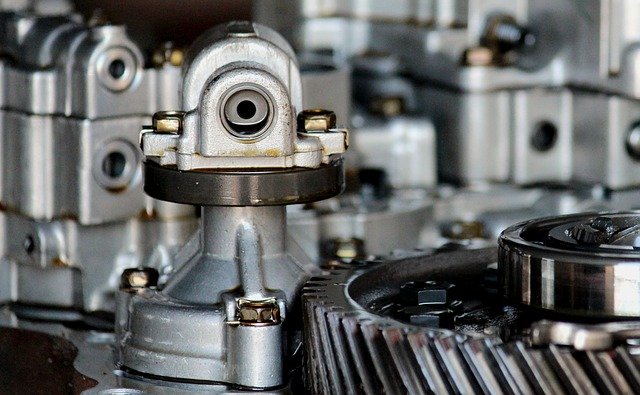How much does car transmission repair cost?
Matilda Douglas-Henry
Your car’s transmission is a vital part of the engine, and as such allows the vehicle to run with maximum power and efficiency. The transmission is basically the engine’s gearbox; without it, drivers wouldn’t be able to reliably control the car from behind the wheel. Therefore it’s essential to have your car’s transmission inspected during your routine service, and to be mindful of any repairs it may need.
In this article we will discuss the varying aspects of car transmission repair, including:
- How your car transmission works
- Signs that your transmission is in need of repair
- What is involved in transmission repair
- How much transmission repair costs, and factors that affect the price

How exactly does my car transmission work?
The overall job of a car transmission is simple and essential: it changes gears depending on your vehicle’s speed, allowing fuel consumption to stay low and preventing the turning gears from overwhelming your engine. However, your transmission setup will vary depending on the make and model of your vehicle. Broadly speaking, there are two different types of car transmission: manual and automatic*.
Manual transmissions consist of a clutch and gear shift, and rely on the driver to—you guessed it—manually select which gear they want to drive in, and engage/disengage the clutch. Manual transmissions also have a flywheel and pressure plate that are connected to the engine; they flank the clutch on either side. Each time you want to shift gears you must disengage the clutch from the engine, which occurs when the pressure plate is released.
Automatic transmissions basically follow the same process, but without a clutch. They rely on a torque converter instead to shift gears. Your automatic transmission might be fitted out with a direct-shift or tiptronic gearbox. A direct-shift gearbox (or DSG) offers a fast, smooth ride by alternately disengaging its two clutches when shifting gears. A tiptronic gearbox, on the other hand, shifts its automatic transmission manually, using either the steering wheel control or the shifter*.
How do I know when my transmission is in need of repair?
If your vehicle does any of the following, there’s a good chance it’s signalling a problem with the transmission. Be on the lookout for these warning signs:
Leaking fluids: A red fluid dripping from underneath your car is one of the easiest ways to know there is an issue with your transmission; leaking transmission fluid indicates that a mechanic needs to check the fluid levels.
Burning smell: this big red flag should send you to an auto shop right away. A burning smell usually means that either your transmission is overheating, or the transmission fluid is old and burning as a result.
Vehicle not shifting gears, or seriously struggling to: this may occur if your system has been fitted out with the wrong transmission fluid, or that your transmission fluid is low.
Noises in neutral: this is a telltale sign that something is wrong with your transmission, and could indicate something pretty minor—that you’re in need of new transmission oil—or that the mechanics are wearing down and a place needs to be replaced.
Dragging clutch: if your clutch is dragging, it is failing to disengage from the flywheel when you push the clutch pedal.
Grinding or shaking: More common with automatic transmission, if a grinding or shaking noise occurs when you shift gears a mechanic needs to check it out as soon as possible*.
And, as always, look out for the engine light on your dashboard.
What is involved in transmission repair?
When inspecting your car’s transmission, the first thing a mechanic will do is an external assessment: they will look under the vehicle to see if there are any transmission fluid leaks and/or noticeable damage from the outside, and check the fluid levels.
The exact nature of the procedures will depend on what parts are in need of repair or replacement. Some of the most common transmission repairs are listed below.
- Check for trouble codes in the computer system, and replace the sensors;
- Replace the transmission filters;
- Replace and reinstall a new pan gasket;
- Reinstall transmission fill/drain plug;
- Lubricate gears and shafts (this is the outcome of replacing transmission fluid in a manual system).
Once all the labour has been completed, the mechanic will carry out a full system test, as well as a road test to ensure that the new parts are functioning and there is no leaking fluid*.
How much does transmission repair cost?
If you are able to locate the problem quickly and have it remedied, transmission repairs might not be too costly; they can, however, become incredibly expensive, especially if entire parts need to be replaced, or if the wear and tear is significant.
A basic repair will cost between $200 and $500, with the price point increasing depending on the usual factors (complexity of repair, make and model of your vehicle).
Extensive repairs, on the other hand, can cost anywhere between $1,000 and $5,000+. The higher price point is likely if your transmission requires an entire overhaul, or many parts need to be replaced*.
Conclusion
We cannot stress how important it is to get your transmission inspected and serviced regularly, and if your vehicle seems to be signalling any of those red flags, get it to a mechanic immediately. Swift action will hopefully prevent higher costs down the road. Use DingGo’s quick quotes service today if your transmission is in need.
